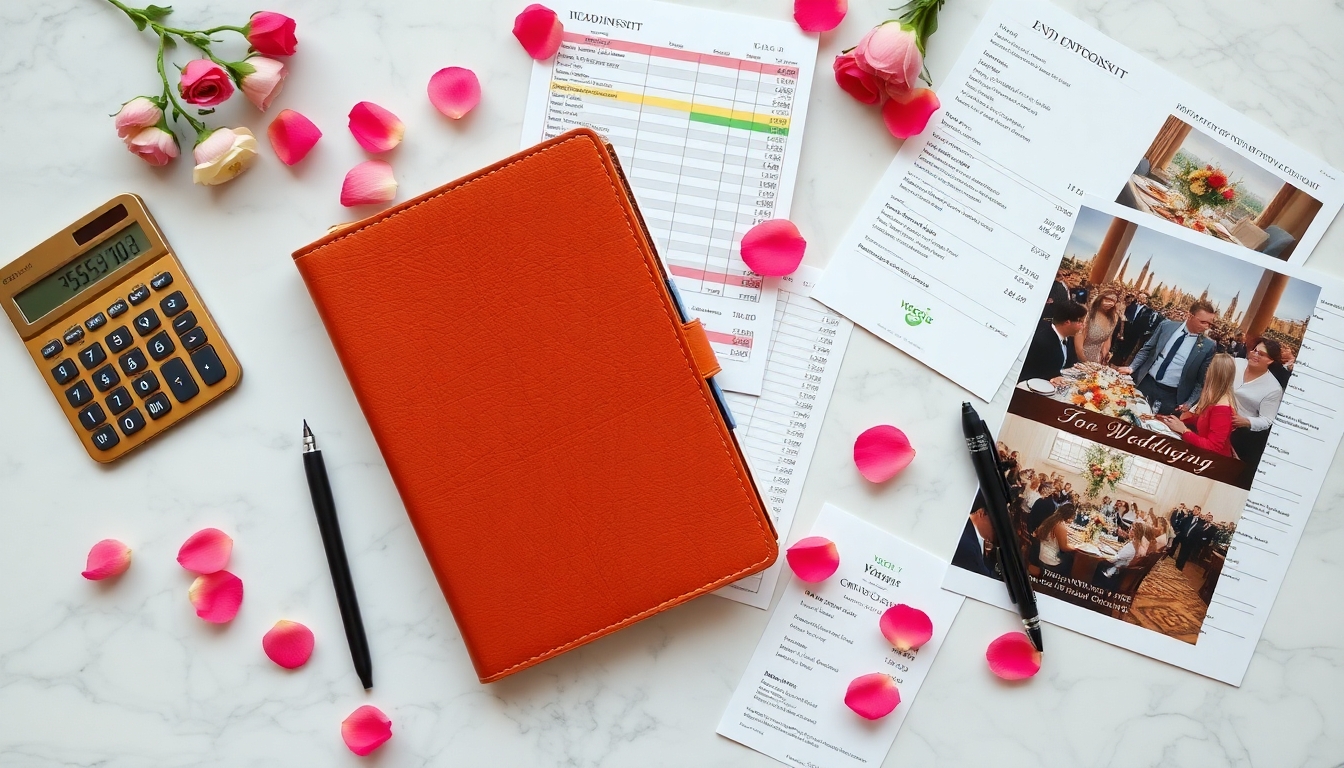Your wedding day is a once-in-a-lifetime event. But creating the perfect celebration doesn’t mean breaking the bank.
With smart planning and prioritization, you can have a beautiful wedding that fits your vision and your budget.
This guide will walk you through practical strategies to create and stick to a realistic wedding budget, regardless of your price point.
We’ll cover essential tips, cost-saving ideas, and how to avoid hidden expenses that can quickly derail your financial plans.
Creating Your Wedding Budget: Where to Start
Before diving into the details, it’s crucial to establish a solid foundation for your wedding budget. Here’s how to begin:
1. Determine your total budget: Assess your savings and any contributions from family members.
2. Set priorities: Discuss with your partner what elements are most important to you both.
3. Research average costs: Look into typical prices for vendors and services in your area.
4. Create a spreadsheet: Use a digital tool to track all expenses and stay organized.
5. Build in a buffer: Set aside 5-10% of your budget for unexpected costs.
Breakdown of Typical Wedding Expenses
Understanding how your budget might be allocated can help you make informed decisions. Here’s a general breakdown:
- Venue and Catering: 40-50%
- Photography and Videography: 10-12%
- Attire and Beauty: 8-10%
- Music and Entertainment: 7-10%
- Flowers and Décor: 8-10%
- Invitations and Stationery: 2-3%
- Wedding Rings: 2-3%
- Transportation: 2-3%
- Gifts and Favors: 2-3%
- Miscellaneous: 5-10%
Remember, these percentages are flexible and can be adjusted based on your priorities.
Cost-Saving Strategies for Every Budget
No matter your budget, there are ways to cut costs without sacrificing quality. Consider these ideas:
1. Off-peak timing: Choose a non-Saturday date or an off-season month.
2. DIY selectively: Handle simple tasks yourself, like creating centerpieces or favors.
3. Trim the guest list: Each guest adds to your overall cost, so be mindful of your invitations.
4. Opt for all-inclusive packages: These can often be more cost-effective than hiring individual vendors.
5. Rent or borrow: Consider renting decor items or borrowing from friends who recently married.
Hidden Wedding Expenses to Watch Out For
Avoid budget surprises by factoring in these often-overlooked costs:
- Marriage license fees
- Postage for invitations and thank-you notes
- Alterations for wedding attire
- Vendor meals
- Overtime fees for vendors
- Service charges and gratuities
- Wedding insurance
Include these in your initial budget to prevent last-minute financial stress.
Budget-Friendly Wedding Ideas by Price Point
Here are some ideas tailored to different budget ranges:
Under $5,000
- Host a backyard or park wedding
- Opt for a brunch or cocktail reception instead of a full dinner
- Use digital invitations
- Choose a cupcake tower or sheet cake over a tiered wedding cake
$5,000 – $15,000
- Consider an all-inclusive venue
- Limit the bar to beer, wine, and a signature cocktail
- Use seasonal or local flowers
- Hire a DJ instead of a live band
$15,000 – $30,000
- Book a full-service wedding venue
- Hire a day-of coordinator
- Upgrade your photo and video package
- Include more elaborate floral arrangements
Remember, these are just suggestions. Tailor your choices to reflect your personal style and priorities.
Tips for Sticking to Your Wedding Budget
Once you’ve created your budget, follow these tips to stay on track:
1. Track every expense: Keep detailed records of all payments and deposits.
2. Communicate clearly with vendors: Ensure all costs are outlined in contracts to avoid surprises.
3. Avoid impulse purchases: Take time to consider each expense and how it fits into your overall plan.
4. Be flexible: Be willing to make adjustments if certain costs end up higher than expected.
5. Use cash or debit cards: This can help prevent overspending compared to credit cards.
When to Splurge and When to Save
Knowing where to allocate more of your budget can help you create a memorable wedding without overspending:
Areas Worth the Splurge:
- Photography and videography
- Wedding attire (especially if you plan to preserve your dress)
- Catering quality
- Venue ambiance
Areas to Consider Saving:
- Invitations and paper goods
- Wedding favors
- Transportation
- Over-the-top decor
Leveraging Technology for Budget Management
Take advantage of these digital tools to streamline your budget planning:
1. Wedding planning apps: Use apps like WeddingWire or The Knot for comprehensive planning and budgeting.
2. Spreadsheet software: Google Sheets or Microsoft Excel can help you create detailed budget trackers.
3. Digital payment systems: Services like Venmo or PayPal can simplify vendor payments and track expenses.
4. Online registries: These can help guests contribute to big-ticket items or experiences.
Final Thoughts: Celebrating Your Love, Not Your Spending
Remember, your wedding day is about celebrating your love and commitment, not about how much you spend. Focus on creating meaningful moments and experiences that reflect your relationship.
By carefully planning your budget, prioritizing what matters most to you, and being creative with your resources, you can have a beautiful and memorable wedding that doesn’t leave you starting your marriage in debt.
Stay true to your vision, but be open to compromise and alternative solutions. With thoughtful planning and a positive attitude, you can create a magical day that you’ll cherish for years to come, regardless of your budget.
